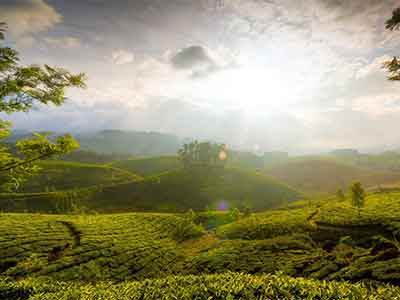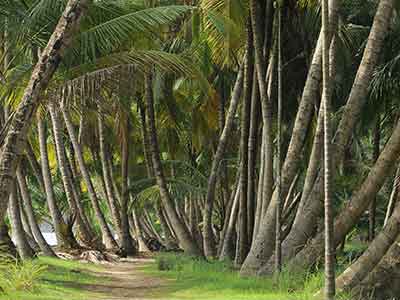Email: sales@travioholidays.in
Help: +91 98950 53303

Kurnool

Kurnool city is the headquarters of Kurnool district and recognized as the Gateway to Rayalaseema.It was the capital of the undivided state of Andhra Pradesh from 1953 to 1956.
To explore the Rayalaseema district is to be awed by the history of the splendid Vijayanagara Empire – renowned in both ancient Rome and Greece for its vast extent and fabled wealth. And even more so for its administration and unique culture of the equality of all persons under its rule, despising the practice of slavery and bonded servitude of one man to another.
In more modern times, the district was ceded in AD 1802, to the British by a descendent of the Asif Jah, the last Turkic dynasty – the Nizam of Hyderabad, in gratitude for their help during a series of wars and skirmishes.
Ketavaram in Kurnool district, has been made famous by the discovery of fabulous Palaeolithic rock paintings and is a short run from Kurnool city. The district has other significant spaces where similar rock paintings, estimated to be around 35,000 to 40,000 years, draw a steady stream of visitors and archeologists – such as Yaganti, Katavani Kunta and the Jurreru Valley. The Belum Caves were probably occupied by Buddhist and Jain monks, going by the extensive Buddhist relics unearthed during archaeological excavations. These are currently housed in a museum in Ananthapur.
Lepakshi
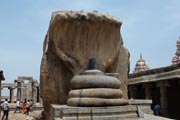
The magnitude of the sculptures and temples of the village of Lepakshi beckon in the sonorous language of the gods of the Vedas. The iconic and immense Lepakshi Nandi bull, vehicle of the god Shiva….the Naga or divine Serpent, its immense hood spread protectively over a Shivalinga and, as legend would have it, believed to have been executed in a single sitting by the sculptor….the single, unsupported, hanging temple pillar… are stories in the Hindu narrative that involuntarily halt the march of time, linking the observer intuitively with more wondrous eras.
The 16th century Veerabhadra temple in Lepakshi was built by two brothers – Viranna and Virupanna – in the Vijayanagar style of architecture, stamped with the distinctive hallmark of intricate sculptures and murals. All the inscriptions on the walls are written in “halle Kannada” or old Kannada – a shared script with kingdoms further south, encompassing mainly the region of Mysore.
Prakasam

Restoration work is due to be completed this year on the ancient and magnificent 2nd century BC Buddhist stupa in the village of Chandravaram in Prakasam district, in a serious attempt to develop religious tourism. The great stupa looms picturesquely over the Gundalakamma river incorporating a three winged vihara or hall and rest rooms and triumphantly crowned with a 30 feet tall dome, describing a circumference of 120 ft.
Special bricks or blocks had been originally used in the construction of the stupa – in unique dimensions of 52 cms x 26 cms x 7.5 cms. A meditating marble Buddha was installed at the entrance, to welcome his congregation. It is no wonder that ancient and medieval Buddhist pilgrims journeyed to admire and worship reverently from distant parts of the country. Contemporary Buddhist pilgrims who visit the stupa today, will also be invited to visit Amaravati, Anantapur and Nagarjunakonda to complete their pilgrimage.
Prakasam is stamped with the history of many great powers – passing through the hands of the Mauryas to the Satavahanas, thence to the ambitious Ikshvaku clan and finally to the last powerful Hindu rulers of the Vijayanagara dynasty – before falling to the Qutub Shahi dynasty and finally, to the Mughals
There are other towns close by which are worthy of mention. The city of Ongole breeds champion bulls, the Bos Indicus. Called Ongole Gitta locally, they are purchased for bullfights in Mexico and in some parts of East Africa, besides being crossbred in many countries. The American Brahmana Bull is an off breed of the Ongole, as is the famous Santa Gertrudis of Texas. Ongoles have been exported all over the world and Ongole Island in Malaysia has been named after them.
In an endless list of fascinating, historical towns in the district, the quarries of Chimakurthy stand out for their international quality black granite.
Singarayakonda

Singarayakonda stands in the shadow of a 15th century temple dedicated to the lion faced, Vishnu incarnation, Sri Lakshmi Narasimha Swamy. In the 16th century, the generous and famous monarch Krishnadevaraya donated five villages to the temple to support its maintenance. Its continued prominence is demonstrated in the grand Brahmotsavalu celebrations held every year in June.
Yoga Narasimha, Ayyappa and Prasannajaneya or Hanuman as he is known in North India, are also very popular deities and there are individual temples dedicated to their worship.
Bhairavakonda
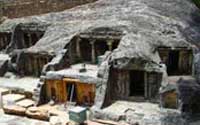
The Bhairavakona caves, near Ongole, dating back to the 7th century AD are rock cut cave temples, specifically visited by Hindu pilgrims during the sacred month of Kartik, every year. On the Kartika Pournami, the full moon of this month, moonlight directly lights the face of the goddess in the sanctum sanctorum, which also houses a Lingam. To view this event is believed to be a special honour and blessing.
Tirupati

People of all faiths in India are familiar with Tirupathi, which is visited by tens of millions of Indians in the country for its famous Venkateswara Swamy temple, Lord of the seven hills of Tirumala.
The Jains believe that the temple was built to honour a Jain saint, one of the 24 Thirthankaras, who meditated constantly in the hills. The Muslims too believe that the temple is sacred and visit it when they can. The Tamil Alvars, Vaishnava saints of the 5th century, sang devotional hymns to the god of this temple and as a powerful Vaishnavite centre, it became the protector of the precious idol of Sri Ranganathaswamy, secretly brought to the temple when Srirangam was invaded.
There is no single explanation or historical evidence for the genesis of this temple – but it is agreed that Hindu dynasties and modern state governments from the 9th century onwards, maintained it for the longest contiguous period – from the Pallavas, Cholas and the Vijayanagara kings to current times in the Republic of India.
Beach, Museums, Aquarium, Food, Temple and Leisure in Visakhapatnam

Rama Krishna Mission Beach in Visakhapatnam is valued for the INS Kursura Submarine Museum, which displays a retired Indian navy Kalvari class submarine. The Visakha Museum is popular with history buffs who are curious about the region. People enjoy the usual beach activities of swimming, sunbathing and volleyball, with leisure time spent at an aquarium or sampling the spicy and delicious coastal cuisine at roadside restaurants. Those so inclined are happy to visit the Kali temple.
Hyderabad – The History of a Capital

Muhammad Quli Qutb Shah founded the city of Hyderabad in AD 1591 and for almost a hundred years, the Qutb Shahi dynasty dominated the region before it eventually fell to the Mughals.
In 1724, the erstwhile Mughal Viceroy of the Deccan and tributory Asif Jah I declared his independence when the Mughal empire weakened in Delhi. Historically, his line was believed to belong to Samarkhand in modern day Uzbekistan. With this unchallenged declaration, Asif Jah founded the fabulously wealthy Turkic dynasty of the Nizams of Hyderabad, ruling from 1724 to 1748.
Mir Qamar ud din Khan Siddiqi or Asif Jah I was also known as Chin Qilich Khan, a title awarded by Aurangzeb. The word “Nizam” is shortened from “Nizam ul Mulk” translating to “Administrator of the Realm”.
The Nizam’s dominions consolidated into a princely state under the patronage of the British. The dynasty ruled for 150 years, with Hyderabad as its capital – which status it continued to enjoy even after the state merged with the Indian Union in 1948 and became Andhra Pradesh.
In 2014, a new region called Telegana was formed after a split from Andhra Pradesh and Hyderabad was mandated to continue as the joint capital of both states, until the year 2025.
Hyderabad displays its signature and strappings of royalty with pride. The last cultural and architectural vestiges of the Qutb Shahi are visible all over the city and even in the courtly and gentle manners and customs of the people. The aromas of the city’s distinctive cuisine, known as Mughlai or “that of the Mughals” have reached all corners of the sophisticated, civilized world and their famous kababs, biryani and haleem are served at the tables of the rich and famous and enjoyed equally by the poor and not so wealthy.
The Qutb Shahis and Nizams carefully nurtured Hyderabad as a refined, cultural universe, attracting scholars of distinction from all over the globe. The cultural shift happened with the decline of Delhi’s emperors and swung towards the music, dance, poetry, theatre and beauty of Hyderabad….a fairytale city enriched by its trade in pearls and diamonds from such legendary mines as the Golkonda, from where the Koh-i-noor was first taken. Hyderabad continues to be distinguished by its name as the City of Pearls and visitors rarely leave without indulging in pearl shopping.
Charminar

The 16th century Charminar, was built in AD 1591 on the eastern bank of the river Musi, to mark the end of the plague by the erstwhile ruler, Mohammed Quli Qutab Shah. The west side of one of the four minarets turns its face to Mecca and houses the oldest surviving, functioning mosque in the city.
Like the Purana Pul, its historical contemporary and the oldest bridge in the city which defied the flooding of the Musi in 1908 and is now a busy market place, the Charminar marks the events and histories of bygone times. Both are beloved landmarks of the city.
The Archaeological Society of India (ASI has placed the Charminar on its precious monuments list. It’s quaint, historic and antique markets, food stalls, crowds and special bazar culture has fused it inseparably with Hyderabad’s skyline. The Charminar or Four Minarets with 149 winding steps that lead into each tower, actually predates the old city. It was built 400 years ago at the centre of the trading hub dominated by the powerful merchants of Golkonda, in order to create a link with the old trading port of Masulipatnam or Masula, which is modern Machilipatnam. This smart trade design greatly facilitated the ease of doing business in terms of transport, unloading of merchandise and swift financial dealings with the merchants before the merchandise was sent further on its way.
It was only later that the old capital of Hyderabad was built – and it was designed to encircle the Charminar, making it the jewel in the crown of the city.
The predominantly Indo-Islamic architecture style, constructed with the materials of the day (a fine compound of granite, limestone, mortar and crushed marble) was pleasantly embellished with a flourish of Persian architectural sensibilities which bestowed balustrades, balconies and stucco art on the two storied structure.
Golconda Fort

Golconda Fort was built towards the end of the 10th century and perhaps in AD 1143 – before the rulers of the ancient kingdom of Golconda, who called themselves the Kakatiya, rose to any significant regional prominence. Legend has it that a shepherd boy discovering an idol in the area, reported it to his king – who then had a mud fort built around the idol in deference. He named it Golla Konda or Shepherd’s Hill and it protected his western borders. It was later strengthened by a descendent, Pratapa Rudra. The Kakatiyas, however, lost the fort to the Musunuri Nayaks who later ceded it to the Bahmani Sultanate as part of a peace treaty in 1364.
After the victory of the Bahmani Sultanate, the fort became an important capital and provincial seat of administration and power. However, it was destined to be a battleground once again and the Qutb Shahi rulers wrested it from the Bahmani Kingdom. Constantly strengthened between the 14th and 16th centuries, the fort, under three Qutb Shahi rulers, finally transformed into a towering, solid and impregnable structure encompassing four distinct forts and dominating a 120 metre granite hill. It was defined by enormous crenelated ramparts. Inspired by the Kondapalli fortress, the 10 feet long granite walls rose to a height of 34 feet with 87 bastions girded the walls. Measuring 7 kilometres, the outer wall, mounted with cannons, was the first defence against attack. There were 8 gateways, 4 drawbridges and withal, there were a number of military fortifications and royal residences, stables, magazines, temples, mosques, stores and a water supply system.
The fort and the might of the Qutb Shahi proved to be a challenge and a thorn in Emperor Aurangzeb’s flesh and he laid determined siege to the fort – finally wining the battle in AD 1687. With no real interest in consolidating his hard won and expensive victories in the Deccan, Aurangzeb turned back to Delhi and the once grand Golconda Fort fell into ruins….watched over only by the tombs of seven Qutb Shahi rulers nearby.
At the Fateh Darwaza or the Gate of Victory, it is possible to experience first hand, the sentry’s warning signal of an imminent attack. A single clap of the hands at a particular point at the entrance below the dome, can be heard with startling clarity at the highest point of the fort which is a kilometre away.
Diamonds
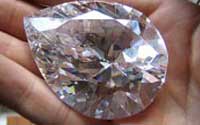
The mines around the Golconda Fort have produced possibly the most famous and historically disputed diamond in the world – the Koh-i-Noor, which once adorned a temple goddess and then changed owners over the centuries – each owner taking it away by guile or conquest from the other. Other famous diamonds quarried locally and which vie for equal attention are the Hope and the Nassak diamonds.
Laad Bazaar

Laad Bazaar crafts the famous Hyderabadi bangles with lacquer – or laad – which are inlaid with artificial stones. Standing just off the crossroads of the iconic Charminar, the bazaar specializes in the sale of bangles, saris and imitation jewellery. It recalls the once fabled city that Hyderabadis yearn for nostalgically and try to imitate during more modern and harder times.
It is recorded that during the time of the Qutb Shahis and the Nizams, the bazaar was a riot of semi-precious gems, pearls, gold and diamond jewellery, silverware, Kalamkari paintings, brocades, velvets, black Bidriware dramatically inlaid with wires of silver from the town of Bidri….lacquer bangles studded with precious gems, rich saris embroidered with gold and silver zari…and with perfumes and hand woven long silk scarves, turbans and the finest linen and cotton fabric.
Begum Bazaar

The Qutb Shahi empire prospered due to brisk trade in the Old City and the seed of markets such as Begum Bazaar was planted by them. In later times, a Nizam’s wife, Humda Begum, gifted some land to the city merchants for the setting up of organized trade and commerce. In the fluid ways markets have, the area blossomed into a retail and wholesale market, popularly known as Begum Bazaar in the lady’s honour.
Salar Jung Museum

This world renowned and spectacular museum is housed within an equally outstanding palace and mostly exhibits the private collection of Nawab Mir Yousuf Ali Khan or Salar Jung III, a work and labour of love spanning forty years. The collection includes an incredible assortment of the most exquisite and expensive jade, a variety of antique clocks, crystal and china tableware and delicate chandeliers from all over the world. In 1914, Salar Jung III, relinquished the post of Prime Minister of Hyderabad and turned his passion for art and literature into a connoisseur’s delight.
HuseinSagar Lake

Named after Hazrat Hussain Shah Wali – responsible for designing and building this lake in 1562 during the rule of Ibrahim Quli Qutb Shah, this artificial body of water is fed by channels from the river Musi. For the edification of the citizens of Hyderabad, the historic lake and its surrounding are constantly improved, with the state taking its cue from its erstwhile Prime Minister in the 1940s, Sir Mirza Ismail, who attended to the task of broadening roads around the lake and overseeing its safety with great seriousness. Today, fountains and coloured lights light the water and multiple bronze statues have added to the glamour of the lake. It is further enlivened by the presence of a large monolithic, white granite statue of Gautama Buddha, which took two years to sculpt and which stands on an island in the centre of the lake. It must be added that Hyderabad, despite its strong Nawabi culture, also celebrates the diversity of other faiths and cultures in the greater region – Islamic, Hindu, Jain, Buddhist and Christian.
Our Top Tour Packages in South India
The four states that constitute South India are composed of distinctive geographic regions - narrow plains that fringe peninsular South India beside the Arabian Sea and the Bay of Bengal with two mountain ranges running alongside and the rocky hardtop of the Deccan and fertile central plains.
